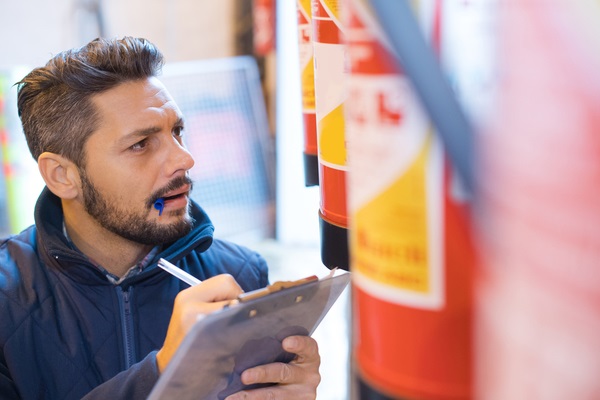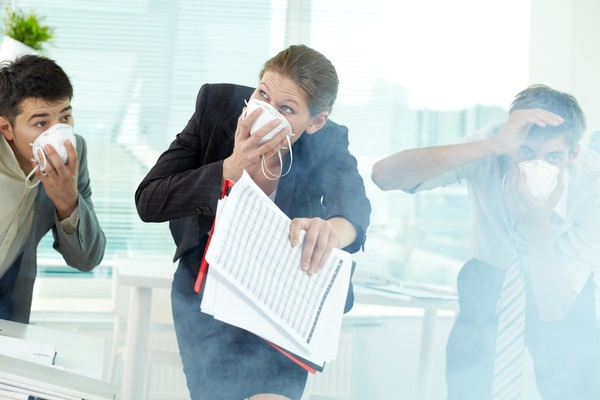There can be no shortcuts when it comes to protecting staff, visitors and physical assets from fire. Cutting corners could be catastrophic.
Having the correct equipment, training, fire safety measures and contingency plans in place can make a huge difference to the outcome of an emergency situation. If a fire severely damaged your business premises and equipment, could you realistically continue to provide your products and/or services? Would you lose customers? Could you end up losing your business?
The risk is real, particularly for small to medium-sized businesses. In the United States, the Federal Emergency Management Agency estimates that nearly 40% of small businesses close following a disaster. The Institute for Business and Home Safety estimates that once a business closes following a disaster, only 25% will ever reopen.
Australian businesses are subject to similar risks and statistics, meaning we should pay close attention to fire prevention and planning.
Steps for Fire Safety
NSW Fire Service recommends the following:
- Avoid storing flammable materials (such as packaging materials or waste) where they can be accessed by unauthorised people, including areas outside your business premises.
- Make sure machinery is kept clean and serviced regularly. If possible, switch machinery off when the business is unattended.
- Secure all access points and make sure your business is well-lit when it is unattended.
- Ensure your business has a functional fire alarm system which is regularly serviced.
- If your business handles dangerous goods, ensure they are stored and used in line with legal safety requirements.
- Make sure your business has a fire escape plan that includes full staff lists and designated meeting points.
- Ensure all staff undergo regular fire safety training. Training will reduce the level of panic during a real emergency and should include: when, how and where to exit calmly; designated roles during a fire emergency; specific training for those responsible for using the fire extinguishers, fire blankets and other specific equipment.
- Protect vital business information. Perhaps consider storing this information at an off-site secure location to ensure it is easily accessible if a fire occurs.
Fire Protection Essentials
It’s better to be prepared with fire safety equipment than be caught short of items which can affect the outcome of a fire and evacuation.
- Fire blankets – Ideal for smothering fires including cooking oils or fat, which can often be made worse if sprayed with water. Most are made with a fire-resistant glass fibre material and should be manufactured to Australian Standards AS/NZS 3504. Fire blankets can be used to extinguish small indoor fires like cooking fires or wrapping around someone whose clothes have caught alight.
- Signage – Available in a variety of sizes and orientations, fire safety signs promote safety and awareness in the workplace by being instantly recognisable and directing staff to life-saving emergency equipment and exits.
- Hard hats and fire warden emblems – making it easy for people to locate the person they need to report to and whose instructions they should follow during a fire emergency.
- Fire extinguishers – Different extinguishers are suitable for different substances, and it’s important to get professional advice as to which type/s of extinguisher will be best suited to your business, as well as ensuring that placement of the extinguishers meets legal requirements.
Other considerations for your building are a smoke alarm, sprinkler and fireproof safe for safeguarding critical information.

Types of Fire Extinguisher
WATER: identifiable by the solid red cylinder, are primarily used for Class A fires, e.g. wood, paper, cloth, rubber, plastics, grass, coal.
FOAM: identifiable by a blue band around the cylinder, are suitable for Class A and B fires, e.g. wood, paper, cardboard, plastic, flammables and combustible liquids.
CARBON DIOXIDE (CO2): identifiable by a black band around the cylinder, are suitable for Class E fires, primarily electrical.
DRY POWDER: identifiable by a white band around the cylinder, can be used for Class A, B, C and E fires – in other words, most fires except oils and fats.
VAPORISING LIQUID: identifiable by a yellow band around the cylinder, and can be used for class A and E fires, e.g. paper, wood, cardboard and electrical.
WET CHEMICAL: identifiable by an oatmeal band around the cylinder, and can be used for Class F fires, e.g. cooking oils and fats, paper and wood.
Safety First
Every employee and visitor to your business wants to go home to their family fit and well, every single day. As such, taking the time to focus on fire protection and planning for your business is essential.
Consider your business fire protection plan as an insurance policy. Hopefully, you’ll never need to use it – but if you do, it could be the one thing that prevents a catastrophe.

